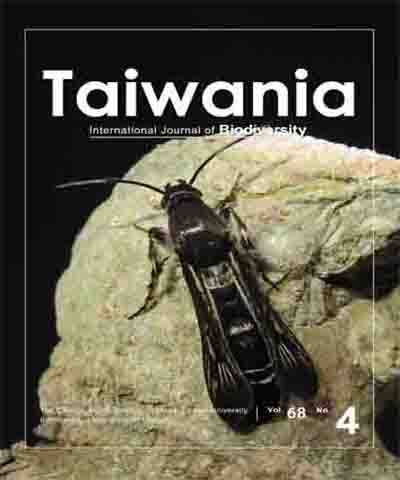
TAIWANIA
臺灣大學生命科學院,正常發行
選擇卷期
- 期刊
Assessing the biological diversity of any region is a fundamental necessity towards promoting sustainable development and implementation as efficient conservation action plan. Thorn forests, which exhibit extreme deciduous traits, cover 1.97% of the area of India. Asola-Bhatti Wildlife Sanctuary (ABWLS), encompassing about 32.71 km^2 area, represents a typical tropical thorn forest ecosystem of low hills layered with quartzite and has undergone drastic transformations due to massive open cast mining of feldspar and for red sand stone. Regeneration of secondary forests has occurred in mining pits that have been quarried. In the present study vegetation composition and plant diversity were analysed in the undisturbed natural forest (UD) and secondary forests sites exposed to different intensities of disturbance resulting in the formation of regenerating secondary forests inside the mining pits (SRMP) and on mine spoils (SRMS) and disturbed secondary forest (HD) in the periphery of the sanctuary. The Normalised Difference Vegetation Index indicated that the Sanctuary experienced an uptrend in vegetation regeneration as a whole over the last 21 years. Total density, total basal area, species richness and diversity indexes showed a declining trend with the increase in disturbance intensity. The good conservation efforts in the sanctuary have resulted in considerable natural regeneration of secondary forests in the degraded habitats including pits and mine spoils but needs greater protection efforts as well as eco-development to meet the livelihood requirements of the local people.
- 期刊
Amorphophallus paeoniifolius is a tuber plant distributed in Southeastern Asia. Methods of rapid and cost-effective molecular marker development are needed for population genetic studies of this species. Simple sequence repeats (SSRs) have been regarded as one of the most informative and versatile DNA markers. However, the traditional SSR development process is laborious and time-consuming. In this study, we reported an approach for SSR development in A. paeoniifolius based on paired-end restriction-site associated DNA sequencing (RAD-seq). A total of 1,537,924 high-quality RAD contigs were assembled, with the average sequence length of 340 bp, and 50,800 SSRs were identified. Ninety SSR primers were randomly selected and validated with 31 individuals of A. paeoniifolius and 16 individuals of Amorphophallus kachinensis. Twenty-three SSR loci were polymorphic in A. paeoniifolius and 13 loci in A. kachinensis. The overall number of alleles per locus ranged from two to seven. Compared with traditional approaches, our study yielded thousands of microsatellite loci in a short time with affordable costs. RAD-seq could be a new method for the development of SSR markers from non-model species.

